|
|
|
|
The largest of the Jewish families making its way to Kentucky from Husi was the Eusters. One after another, the Eusters made their way from Husi to the small Kentucky towns of Beattyville, Pineville, and Middlesboro. This is how Deborah R. Weiner describes "chain migration" in her book, Coalfield Jews: An Appalachian History: "The pervasive phenomenon of chain migration provides the best explanation of trends related to the origins of Central Appalachian Jews. ... Most came to the region not as isolated individuals, but as parts of families whose members arrived together or, more commonly, in succession, with early settlers encouraging relatives to join them either directly from Europe or from their first homes in the U.S. ... Interview with Dr. Deborah Weiner about her research and book |
 Weiner continues elsewhere in her book: "Nevertheless, Middlesboro and its environs managed to attract enough Jews to form an active congregation. ... The Bell County seat, Pineville, contributed many congregation members, mostly related to the Eusters, ... who may have pre-dated the Weinsteins in their arrival in the region. (The railroad came to Pineville in 1888, a year before it reached Middlesboro.) ... Eusters eventually spread to another Kentucky coalfield county seat, Harlan, and that town would later challenge Middlesboro as the center of Jewish life in southeastern Kentucky." |
|
The Euster family matriarch, Ida Euster, was born Ida Goldner in Romania in about 1851. She married Abraham Euster in the mid-1860s and they had eight children in Husi: Isaac, Morris, Robert, Charles, Eva, Louis, Michael, and Sadie. Abraham had a lumber business in Husi. He died in Husi from appendicitis some time before 1910. After Abraham's death, Ida brought her youngest daughter, Sadie Euster, to the U.S. By that time, the rest of Ida's family had already made a home in Kentucky. Ida and Sadie lived in Cincinnati until Sadie died of skin cancer in 1917. She was only 25. Ida then moved to Pineville and lived with her other daughter, Eva, and her family. 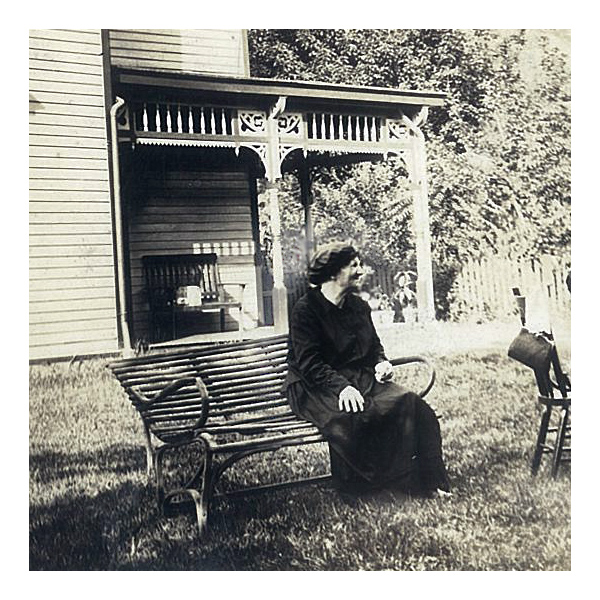
Ida Euster in Pineville |
Morris Euster was the first brother to leave Husi and head for America. Like Sam Firestein and Nathan Amster, Morris made his way to Beattyville, KY in the late 1880s. He was naturalized in Beattyville in 1892. By the end of the 1890s, Morris had been joined in Beattyville by his brother, Charlie, and they were in business with Sam and Bill Firestein. The 1900 U.S. Federal Census shows the four bachelors living together in Beattyville. Shortly afterward, Morris married Sam Firestein's sister, Rose. They had three children: Abraham, Hester, and Ruby. Morris eventually moved his family to Pineville. 
Morris Euster with grandniece, Ruth Isaacs |
|
Charlie Euster was born in Husi in 1879 and arrived in the U.S. in 1900. He was joined in Beattyville by Sarah Aronowitz, who was possibly also from Husi. They married around 1908 and they had two children: Abraham and Sylvia. Like Morris, Charlie also eventually moved his family to Pineville. 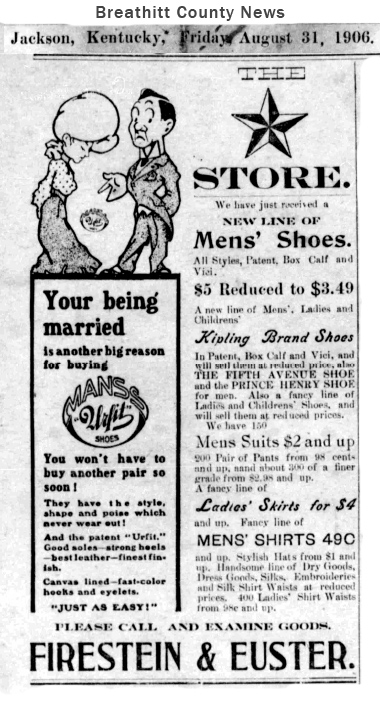
|
The Eusters quickly turned most of their attentions away from the stores they operated with the Firestein's in Beattyville, Jackson, and Campton. The railroad was moving south and east, making its way toward the rich, undeveloped coal fields of southeastern Kentucky. The L&N branched east from Corbin and arrived in Pineville in 1888. The town grew to 5000 people almost overnight. Middlesboro didn't even exist when the railroad arrived there in 1889. By 1891, it was a town of 6000 people and boasted a streetcar line, electric lighting, and a water system. 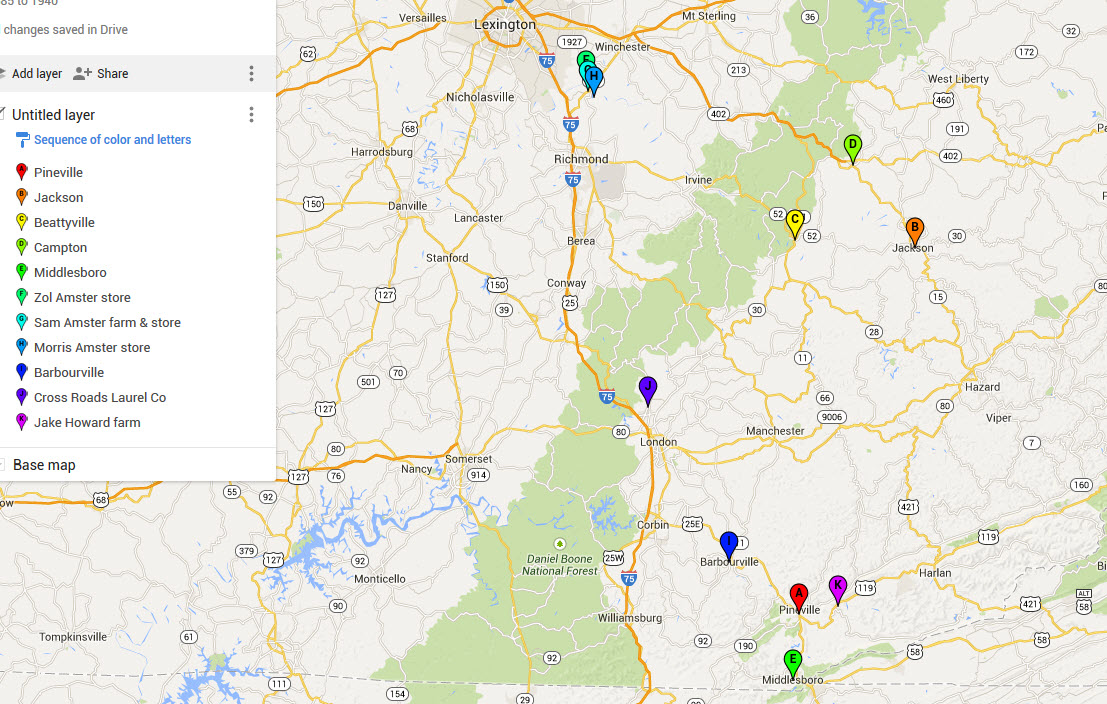 Click the map for larger version. Pins B, C, and D are the locations of the three original stores operated by the Firesteins and Eusters in Beattyville, Jackson, and Campton. Pins A and E are Pineville and Middlesboro. |
|
Robert Euster was born in Husi in 1875. He arrived in the U.S. in 1891 and went straight to Pineville. He married Tillie Harr in 1899 and they had four children: Harry, Lillian, Abraham, and Frieda. Tillie died around 1910. Robert then married Henrietta Horr and they had two children: Dorothy and Bernard. By this time, Robert's family was living in Middlesboro where the Eusters had opened a store. He died in 1942. Isaac Euster came to Pineville in 1898 where he joined his brother Robert. Ike married Rosa Klein in New York in 1904. They had six children — Abraham, Sadie, Pearl, Evelyn, Florence, and Tillie — the first three born in New York. By 1910, Ike had moved his family back to Kentucky, where they joined Robert Euster's family in Middlesboro. Ike died in Middlesboro in 1940. 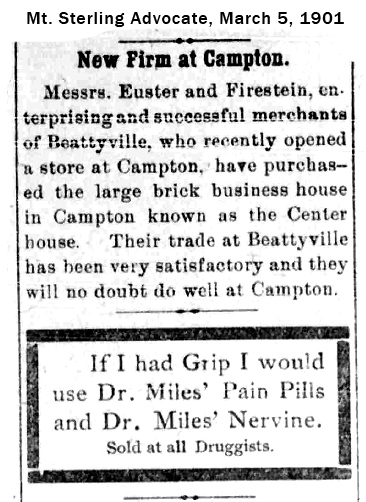 |
Louis Euster was born in Husi in 1880 and arrived in New York City in 1901. Unlike his brothers, Louis stayed in New York at first. There he met Sophia Goldstein, another Romanian immigrant. They married in 1910 and had three children: Evelyn, Myra, and Irma. By 1918, Louis had brought his family south to Pineville. Louis and Sophia moved to Cincinnati in the 1940s. They both died there in 1974. Max Euster was born in Husi in 1887. He came to the U.S. in 1901 and joined his brothers, Robert and Ike, in Middlesboro. After becoming established, he married Rachel Firestein and settled in Corbin. Max and Rae had one son, Sterling. Max died in 1951. 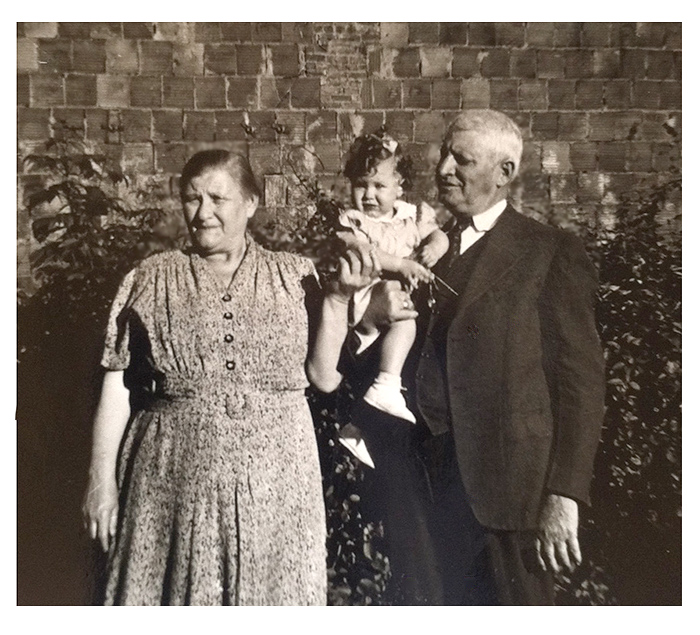
Eva and Max Euster with granddaughter, Ruth Isaacs |
|
The older of the two Euster daughters, Eva Euster, married before coming to America. Eva was born in Husi in 1880. There she married Max Isaacs. Max came to the U.S. in 1900, the same year his first son, Harry, was born in Husi. Eva and Harry joined Max three years later. Eva and Max had three other children: Abraham, Lena, and Oscar. The family lived for a while in Jackson, KY where Max must have taken over the Firestein interest in the dry goods store, which became a Euster & Isaacs store. By 1910, the family had relocated to Pineville. 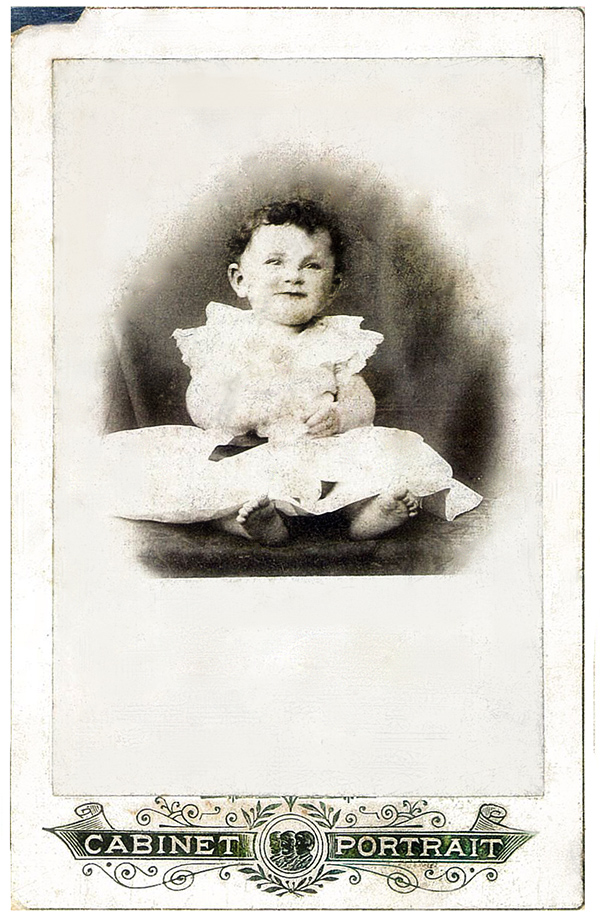
Harry Isaacs, age 1, in Husi |
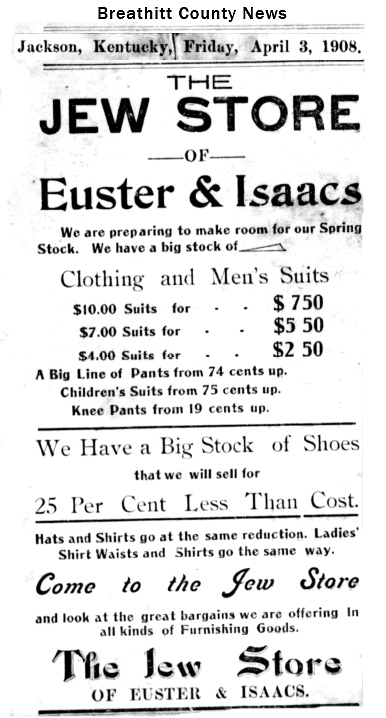 In the early 1900s, many small towns in rural America had a dry goods store — a store that sold suits and coats, shoes and hats, work clothes and school clothes, yard goods and notions. Often these stores catered to the underserved: quality goods at a decent price for the immigrants, sharecroppers, miners, blacks, and factory workers. The dry goods store was usually owned by Jews and was often referred to within the town as "the Jew store." And it was called "The Jew store" (mostly) without malice. This was so true that store owners would even use the name in referring to their own store, as seen in this 1908 advertisement for the Euster & Isaacs store in Jackson, KY. |

